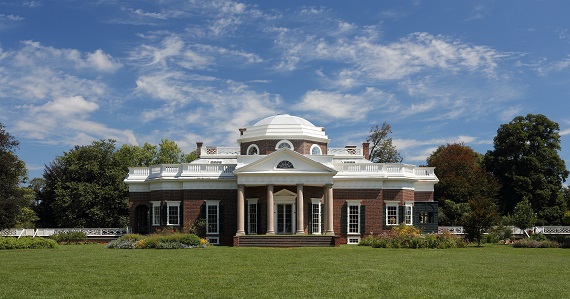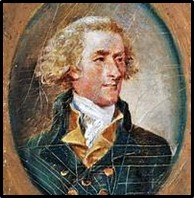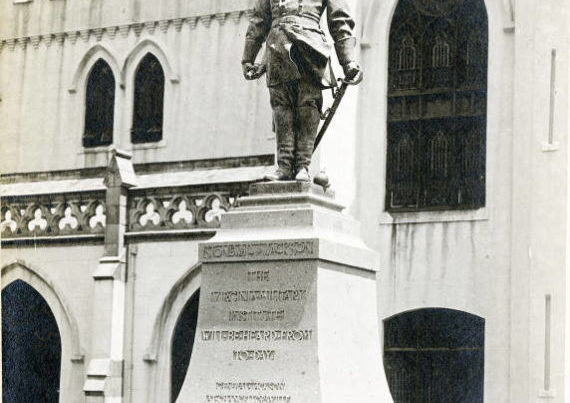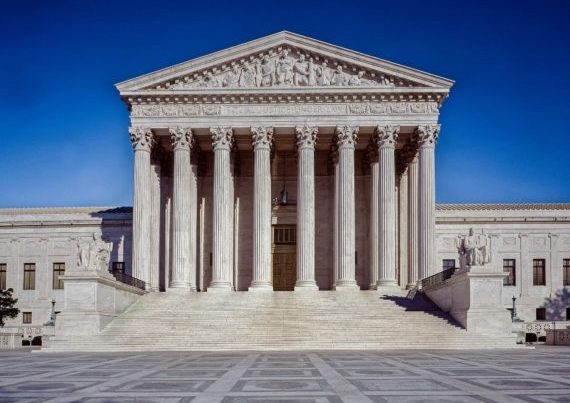Recently, I watched the Abbeville Institute’s Zoom conversation with Mike Kitchens on the loss of historic antebellum homes. Many have been lost to demolition or neglect. But there is another kind of loss threatening these historic sites. While it is important to discuss the people who built and kept these plantations afloat, some house museums are focusing disproportionately on the subject of slavery to the detriment of the original white inhabitants. But also because of how it is being done, to the detriment of the enslaved inhabitants as well. In his talk, Kitchens mentioned Monticello in particular.
I know what he’s talking about. I’ve watched this scenario unfolding for twenty years. I was a docent at Monticello in the early 2000s. I conducted both tours of the house and of the enslaved community on Mulberry Row. Under the guidance of the President of the Thomas Jefferson Foundation, historian Daniel Jordan, our training was exceptional, rigorous, and grounded in fact. Tours focused on Thomas Jefferson the statesman, politician, architect, scientist, educator, and family man as viewed through the lens of his home and the times he lived. From its architecture to its inspired contents, Monticello aptly reveals the man. Interpreting the history of his home also illustrates the contradiction at Jefferson’s core.
Just below Jefferson’s study is Mulberry Row, home and workplace to dozens of the enslaved. They were the workers who helped build Monticello and they made Jefferson’s life possible. Therein lies the contradiction. An ardent believer of freedom and individual rights, he held over 600 people in bondage in his lifetime.
How did Jefferson reconcile this? How do we? There is no easy answer. We guides always quoted Jefferson’s own words acknowledging the evils of slavery, how it corrupted the slave holder himself, and his strong belief that, in the end, “God would be just.” Aware of the wrongs of the institution upon which he and others so heavily depended, he struggled about how best it should end. Finally, in old age, he concluded that the solution to slavery would be the work of future generations.
This naturally segued into the question on most every visitor’s lips: Jefferson’s relationship with the enslaved Sally Hemings. In our training twenty years ago, we were strictly instructed to adhere to what we did know. We all told our visitors: “While it cannot be scientifically proven, since there is no male DNA from Jefferson himself—the DNA for the test came from descendants of Jefferson’s paternal uncle—there is circumstantial evidence that Jefferson fathered children with Sally Hemings. This circumstantial evidence comes from Jefferson’s own diaries, from observations made in letters written by people who visited Monticello during these years, and the account of Madison Hemings given in his old age. The evidence suggests that ‘more than likely,’ Jefferson fathered at least one and possibly four of Sally’s children.” This is what we told visitors to the little mountain.
To Kitchens’ point, today this interpretation has shifted. Sally is as present at Monticello as Jefferson. Tour guides make the paternity claim a firmly established fact, and conjectured points lacking total scientific proof are taken to be exactly what happened. Let’s review the sources of the circumstantial evidence.
The most telling circumstantial evidence that Jefferson fathered children with Sally is Jefferson’s diaries, which gives us meticulous and detailed accounts of his farms, his whereabouts, his visitors to Monticello, what crops he’s growing, what feed-grain he has ordered from nearby farmers, births, deaths, and matches of enslaved persons on the plantation, &c. Nothing is left out, it seems, except any mention of children Jefferson might have fathered with a favorite slave woman.
The most important source is the 1873 Ohio newspaper interview with Sally’s son, Madison Hemings. Mr. Hemings asserted that he and his siblings were Thomas Jefferson’s children. Another crucial course is the 1998 DNA testing results using DNA from the descendants of Sally’s son Eston Hemings. That testing revealed a rare DNA pattern found in Jefferson’s paternal uncle’s line. We do not and cannot so far know if it was from Thomas Jefferson, since DNA from Mr. Jefferson’s remains is virtually unattainable. He had no surviving sons. These were our only sources twenty years ago, and, when visitors asked questions, this is what we told them. These are our only sources still. Yet the interpreters’ emphasis is now on Madison Heming’s words. The other circumstantial evidence corroborate what Mr. Hemings told the Ohio journalist.
What is clear in his diaries is that Jefferson’s times in residence at Monticello do most coincide with Sally Hemings’s conceptions of numerous children. The circumstantial evidence is strongest in the case of Eston Hemings, whose descendants carry the Jefferson family DNA. Madison’s descendants have declined to allow DNA testing: Thus how can we prove that Thomas Jefferson—rather than another Jefferson male—was Madison’s father? Perhaps all four of Sally’s children were fathered by Thomas Jefferson—one Monticello guide recently told visitors that no less than six Hemings children were fathered by Thomas Jefferson—but handing out this number was an unfortunate exaggeration. The point here is that we do not, in fact, know for sure.
We should take nothing at all from Sally Hemings as a person. We know she worked in the house, enjoyed a close relationship with the family, and she was held against her will in bondage. We know for sure that masters took sexual advantage of their slaves often enough. One of the more careful Monticello guides asked her group recently, when we were all standing in Jefferson’s bedroom: “I ask you, can a slave say no?” And this excellent guide said no more about the matter.
Today, Monticello is “the Sally Hemings Show.” Jefferson and her relationship is a fait accompli. Why the shift? I have two theories:
First, it is good for business. Twenty years ago, books, news articles, and movies on Sally and Jefferson always resulted in an uptick in tours. People who may not care for history do care about sensational stories. Sally is good for business. Current marketing clearly demonstrates this emphasis.
Second, the Sally Hemings emphasis protects Monticello. Focusing on Sally might well be saving Monticello from being torched by Woke activists or an angry denouncer of the Founding Fathers. She could be the only thing between Jefferson and violent cancellation.
But we must also ask, Are we being fair to Sally Hemings or only using her for another kind of gain? For that matter, are we being fair to Thomas Jefferson? Such justice does not seem to matter much anymore. Why does being just in regards to Sally have to mean being unjust in regards to her master and possible lover?
Last spring I toured the McLeod Plantation in Charleston, SC. The docent introduced his tour by describing the plantation as a “labor camp” and he never veered from his theme that McLeod was a horror show of complete subjugation and exploitation of black people. It is of course true that antebellum plantations were labor camps. But this is not all they were.
While our tour guide dwelt on the cruelties of slavery, he fairly ignored the enslaved people themselves. Under egregious circumstances, the enslaved communities lived, worked, loved, and adapted their lives to their terrible circumstances in order to build their lives and carry on. Some of the best scholarly work ever done will not allow us to make the enslaved people into mere victims who had no agency. Our McLeod guide omitted how the slaves kept their dignity and humanity and rose best they could above their fate. The enslaved were human beings and they were together a people living in the USA. By not describing their abundant talents and abilities, the tour guide was keeping them victims. He promised us in the beginning that his tour was about “ethical history.” He fell well short of his goal in this regard.
At Monticello twenty years ago, I conducted tours about the enslaved community. Those tours provided detailed descriptions of the living and working conditions of the enslaved. Jefferson’s own meticulous records detailed what he provided slaves in terms of food and clothing, what the typical work day was like for a field hand, or a house slave, or a slave working in the manufacturing quarters such as nail-making or the joinery. We illustrated the pitiful conditions, about what happened to runaways, and how Jefferson “motivated” his workers. The oral histories collected in Monticello’s “Getting Word” Project provided substantial material. As a result, visitors left these plantation community tours with deeper knowledge and understanding of the enslaved persons who did their best to form meaningful lives under horrible circumstances.
The point of our tours and interpretations twenty years ago was to give our visitors the means to see the history for themselves. No visitor left the mountain thinking that slavery was not hideous and shameful. But neither did they leave thinking that the enslaved people were little more than animals. While most white people in America also lived on dirt floors, windowless cabins, and scant resources otherwise, the whites, whether rich or poor, had something very precious. They had freedom. Every visitor to Monticello was very clear about this when he or she caught the van to go down the mountain. All understood the difference between freedom and slavery. All realized that an enslaved person could not say “no.”
Again, we thought it important twenty years ago to relate to visitors how the enslaved community coped through honing their own skills, working towards purchasing their own freedom (rare, but possible; freedom was costly), honoring and keeping best they could family connections, and preserving foodways, music, creative tasks (quilting), and, when allowed, learning how to read, write and strengthen the Christian faith. Enslaved people embraced Christianity because it offered hope and a life beyond this one. They identified with Israel. Crossing the Ohio River to freedom was like crossing the Jordan. This was an accurate account of the “entire history” of Monticello, and supported by the best scholarship.
On my tours at Monticello, I liked to point out the front stone pillars on the East Front. They were carved by an enslaved man, Great George. At one point in his obsessive tinkering with the house, Jefferson had Great George pull the pillars down, then later put them up again. The great practical artistry of these revered pillars can be seen to this very day. In Jefferson’s library, I highlighted the elegantly proportioned wooden arch. This was carved by John Hemings, a literate, highly skilled, enslaved joiner. Letters exist between Hemings and Jefferson about the house’s ongoing renovations. In countless ways, the enslaved at Monticello enabled Jefferson to be Thomas Jefferson. We need to honor those people. This does not lessen the evils of slavery.
Slavery was abhorrent. No one can deny it. But it is important to speak of its place in our history correctly. In context. With accuracy. We must remember that these enslaved people were also founding mothers and fathers of our country. We must honor their contributions and their humanity. Dwelling alone on the injustices of the white man unintentionally renders the enslaved Americans little more than victims. And such historical interpretation only keeps these people enslaved.







What was so abhorrent about slavery? Can the author explain?
This is an interesting column. Unfortunately, IMHO, it plays into the current zeitgeist of the Woke/Northern/Yankee version of slavery in the South. Read The Slave Narratives, or pick up a copy of Gracy McWhiney’s “Cracker Culture, Celtic Ways in the Old South [among a number of books] and note the numerous primary source footnotes from Yankees that make it clear that slavery was not the simplistic version(s) that too many writers, this one included, and ‘historians’ influenced by Yankee versions of history make it out to be. In McWhiney’s work you will find examples of slaves that had days off, and had fine and colorful suits to wear while out on the town, that they were frequently hired out to white people for money that the slaves got to keep or shared with their masters, that slaves were considered even lazier than their white masters and that slaves had a song about “How I’d rather be a “N word” than a poor white man.” Was a Southern slave worse off than any of the white “Wage Slaves” of the North working in Yankee factories? Were these white “Wage Slaves” genuinely free? Could they say no to their boss if he wanted sex, or overtime or anything else? Could they flee west and be free there? No, they were too uneducated and poor to do that.
One day, while visiting Monticello, I was waiting at the bus boarding area standing near the large statue of Jefferson that is there. A Black lady made the comment that TJ was a really good looking many. She was clearly enamored with his looks. Is it not possible that Sally [ assuming all the allegations against Jefferson] was intensely attracted to Thomas, and everyone knows women are attracted to men of intelligence, wealth and power like TJ. I assert that it is entirely possible that Sally welcomed Jefferson’s advances and she very possibly did not want to say ‘NO’.
Using emotionally charged words like “Labor camp horror show of complete subjugation and exploitation, horrible circumstances, hideous and shameful, abhorrent” only enables leftist/Woke/Yankees who want to slather thick layers of guilt on gullible White folks, and obscures historical facts or Real History as I think of it.
Corrections: it’s GraDy McWhiney, not GraCy; and TJ was a good looking “man” not “many”.
This is the first time I have read that Madison Hemings’ descendants have declined to allow DNA testing. What could they be afraid of?
Anthony Esolen’s Word and Song piece asserts that Southern slaveholders had a bad conscience. What?
“This naturally segued into the question on most every visitor’s lips: Jefferson’s relationship with the enslaved Sally Hemings. In our training twenty years ago, we were strictly instructed to adhere to what we did know. We all told our visitors: “While it cannot be scientifically proven, since there is no male DNA from Jefferson himself—the DNA for the test came from descendants of Jefferson’s paternal uncle—there is circumstantial evidence that Jefferson fathered children with Sally Hemings. This circumstantial evidence comes from Jefferson’s own diaries, from observations made in letters written by people who visited Monticello during these years, and the account of Madison Hemings given in his old age. The evidence suggests that ‘more than likely,’ Jefferson fathered at least one and possibly four of Sally’s children.” This is what we told visitors to the little mountain.”
Hmmmm. Circumstantial evidence? Indeed, an odd article.
I’ll go out on a limb here. I will dare say that the evidence is anecdotal at best, and at worst, there is evidence of absence.
The most spare, concise and convincing explanation that Thomas Jefferson DID NOT father a Hemmings child comes from none other than Ann Coulter, a lawyer. From a column dated July 03, 2019 and entitled:
“Was Thomas Jefferson On The Duke Lacrosse Team?”
This trip reads as if it comes from the Atlantic Mag. Abbeyville has fallen.
“But it is important to speak of its place in our history correctly…”
Then why didn’t you?
This article has no business being published on Abbeville. I read and support this site because it offers honest, truthful history viewed from a Southern perspective. This article could have been published in Salon or the Atlantic. Its just a compilation of politically correct tropes lifted from abolitionist propaganda compounded with the ridiculous p.c. affectation of calling slaves, “enslaved persons”. Did they also have “black bodies”?
This article needs to be removed for the sake of Abbeville’s credibility and the Institute should apologize to its readers and supporters for having allowed it to be published. This was an inexcusable oversight.
“We should take nothing at all from Sally Hemings as a person.” – well maybe we should apply a little judgement and discernment regarding her moral character considering she had 6 children without bothering to get married or commit to any monogamous relationship. ”
We know for sure that masters took sexual advantage of their slaves often enough.” – that’s another trope that has little or no basis in historical fact.
“Slavery was abhorrent. No one can deny it.” – well, that is a demonstrably false statement and I deny it, for starters. Also, the vast majority of former slaves interviewed under the Federal Writers Project in the 1930’s who testified they were the best years of their lives. I’ll also cite Dr. Robert Lewis Dabney on the subject,
“Was it nothing that they [the Africans] should be brought, by the relation of servitude, under the consciences and Christian zeal of a Christian people, in circumstances which most powerfully enlisted their sense of responsibility, and gave free scope to their labour of love?
Let the blessed results answer, of a nation of four millions lifted, in four generations, out of idolatrous debasement, “sitting clothed, and in their right mind;” of more than half a million adult communicants in Christian churches! And all this glorious work has been done exclusively by Southern masters; for never did foreign or Yankee abolitionists find leisure from the more congenial work of slandering the white, to teach or bless the black man in any practical way.
This much-abused system has thus accomplished for the Africans, amidst universal opposition and obloquy, more than all the rest of the Christian world together has accomplished for the rest of the heathen.”
— Rev Dr. R. L. Dabney
An interesting and thought provoking piece, showing Abbeville’s commitment to showcasing the wide variety of perspectives of the South. Thanks for giving us something to chew on today!
I think the final 2 sentences of this article are essential to understanding the lens through which American history is viewed today.
The article has one main point: Tour guides at Monticello and every other historical house-museum should not go beyond the facts. In addition to this theme, the author suggests that our understanding of the lives of slaves is skewed and impoverished when tour guides inadvertently give the slaves little agency or ability to have created their own coping culture, &c. This referred, not to Monticello especially, but to a tour she evidently took at McLeod Plantation near Charleston. If the author uses language that is now used everywhere–e.g. “enslaved persons”–that is no mark against her. The article is in fact historically informed, all in all, and I think rather brave. That the author does not say what someone else believes she OUGHT to have said about the subject does not really matter and should not have anything whatsoever to do with the Editor’s decision to publish the thing. I believe the article is a valuable point of view — a cautionary tale, really.